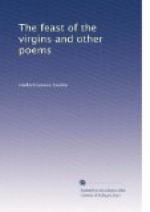[22] See Mrs. Eastman’s Dacotah, pp. 225-8, describing the feast to Heyoka.
[23] This stone from which the Dakotas have made their pipes for ages, is esteemed wakan—sacred. They call it I-yan-ska, probably from iya, to speak, and ska, white, truthful, peaceful,—hence, peace-pipe, herald of peace, pledge of truth, etc. In the cabinet at Albany, N.Y., there is a very ancient pipe of this material which the Iroquois obtained from the Dakotas. Charlevoix speaks of this pipe-stone in his History of New France. LeSueur refers to the Yanktons as the village of the Dakotas at the Red-Stone Quarry. See Neill’s Hist. Minn., p. 514.
[24] “Ho” is an exclamation of approval—yea, yes, bravo.
[25] Buying is the honorable way of taking a wife among the Dakotas. The proposed husband usually gives a horse or its value in other articles to the father or natural guardian of the woman selected—sometimes against her will. See note 75.
[26] The Dakotas believe that the Aurora Borealis is an evil omen and the threatening of an evil spirit (perhaps Waziya, the Winter-god—some say a witch, or a very ugly old woman). When the lights appear danger threatens, and the warriors shoot at, and often slay, the evil spirit, but it rises from the dead again.
[27] Se-so-kah—The Robin.
[28] The spirit of Anpetu-sapa that haunts the Falls of St. Anthony with her dead babe in her arms. See the Legend in Neill’s Hist. Minn., or my Legend of the Falls.
[29] Mee-coonk-shee—My daughter.
[30] The Dakotas call the meteor, “Wakan-denda” (sacred fire) and Wakan-wohlpa (sacred gift). Meteors are messages from the Land of Spirits warning of impending danger. It is a curious fact that the “sacred stone” of the Mohammedans, in the Kaaba at Mecca, is a meteoric stone, and obtains its sacred character from the fact that it fell from heaven.
[31] Kah-no-te-dahn,—the little, mysterious dweller in the woods. This spirit lives in the forest, in hollow trees. Mrs. Eastman’s Dacotah, Pre. Rem. xxxi. “The Dakota god of the woods—an unknown animal said to resemble a man, which the Dakotas worship: perhaps, the monkey.”—Riggs’ Dakota Dic. Tit—Canotidan.
[32] The Dakotas believe that thunder is produced by the flapping of the wings of an immense bird which they call Wakinyan—the Thunder-bird. Near the source of the Minnesota River is a place called “Thunder-Tracks” where the foot-prints of a “Thunder-bird” are seen on the rocks twenty-five miles apart. Mrs. Eastman’s Dacotah, p. 71. There are many Thunder-birds. The father of all the Thunder-birds—“Wakinyan Tanka”—or “Big Thunder,” has his teepee on a lofty mountain in the far West. His teepee has four openings, at each of which is a sentinel; at the east, a butterfly;




